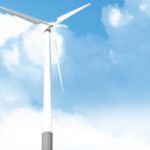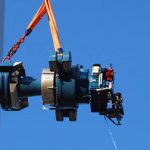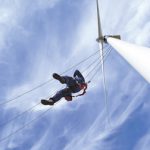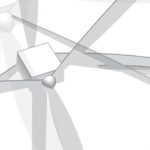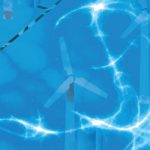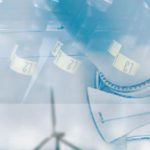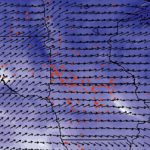In recent years the world has witnessed continuous and rapid development of wind power in China. By the end of 2009 more than 20,000 wind turbines had been erected across the country from north to south, and from inland to the coast. As time passes turbines are coming out of warranty, and their maintenance begins coming at the operator’s own cost. Therefore, besides the productivity of a wind turbine, wind farm operators are more and more interested in reducing their lifecycle costs; i.e. reducing maintenance costs during the lifetime of wind turbines.
In this context, Condition Based Maintenance (CBM) is recognized as the most practical approach to tackling this market demand. It allows timely maintenance before failure occurs so as to avoid consequential failure escalation and prepare necessary resources, e.g. spare parts, cranes, time slot, etc. At the same time this means increased availability and reduced lifecycle costs. Due to this it is necessary to monitor the conditions of wind turbines and their components in an overall approach based on real-time data on the wind turbine, providing information and automatic diagnosis in advance in cases of potential failure. Figure 1
With years of experience in condition diagnosis for electromechanical systems Siemens Ltd., China-Corporate Technology—SLC CT, for short—works hand in hand with Winergy to foster the application of condition-based maintenance in China, to ensure a sustainable future for its ever-growing wind power market. The lessons learned and technologies developed for this particular application will benefit newer, evolving markets around the world, such as that found throughout North America.
Resolution: Winergy CDS
The new Winergy Condition Diagnostics System (CDS) supports wind farm operators and wind turbine manufacturers with comprehensive health information of their wind turbines. The Winergy CDS goes far beyond a conventional condition monitoring system. It delivers advanced signal processing and automated machinery health diagnostics values on vibration levels, load, and oil properties, therefore permitting more-reliable diagnostics and forecasts about future availability once the operating abnormalities of the wind turbine are detected. You receive recommendations for the necessary corrective action so that your workflow is optimized. Fault messages, diagnostics, localization, forecast, recommended solutions—all of the relevant information is provided in an automated format to the Operations and Maintenance center. All of this happens at once, without any experts being involved, and the information is delivered to the appropriate parties in real time. As a consequence, the all-decisive time advantage is being created in order to secure increased system availability and to minimize the lifecycle costs. It could hardly go any faster.
The following example may demonstrate how an automatic diagnostics system like Winergy CDS can help wind turbine owners keep their turbines in good shape. When a defect is detected on a wind turbine gearbox—e.g. flaking on rolling element bearing or on gears—alarm information will be displayed on the monitoring screen of Winergy CDS which is located, for example, in the central monitoring room of the power generation company (Figure 2). Here the health conditions of all turbines owned by this company are monitored. Operators can identify where the problematic wind turbine stands on a map screen, on which a status overview of all wind turbines is organized as wind farms (Figure 3). The defective wind turbines will be categorized according to different criticality levels. A yellow-colored number indicates how many turbines have detected defects, but can still continuously operate. A red number shows turbines with defects that have reached critical level and need timely maintenance actions. In this example, it reports that a wind turbine has a critical defect and needs to be dealt with immediately (Figure 2).
This information is then automatically sent to the maintenance department, and the maintenance technicians can look at detailed diagnostic results provided by Winergy CDS to arrange their repair work. It shows that the critical-level defect is located in the gearbox with a red color (Figure 4). And when the gearbox icon is clicked, possible defective bearings or gears are displayed in red (Figure 5). When needed, a text message alarm window can point out the defect location, type, criticality level, and recommended actions (Figure 6). Here the defect is diagnosed as a rolling element defect on gearbox’s high-speed shaft bearing #542. There are 94 days remaining for continuously normal operation in worst case. Such a clear diagnosis will save plenty of time on manually analyzing signals and possible defect locations, guiding maintenance technicians in conducting inspection and repairs.
On the other hand, experienced users can still use the state of the art signal analysis tools provided by Winergy CDS, e.g. spectrum, order tracking, trend analysis, etc., to conduct their own diagnosis (Figure 7). The system is based on standard products that are proving themselves in daily operation worldwide. It records, processes, visualizes, and stores signals (analog and binary) and numerical data. Based on the latest industrial PC technology (Microbox PC) and hardware I/O nodes, the modular structure is flexible and grows with the requirements of customers (Figure 8). Moreover, the system can be integrated into existing and new wind turbine systems interference-free and for use with multiple devices. Standardized interfaces ensure reliable, simple connection of the most varied signals sources.
Synergy: Service Package
As the only supplier offering a complete drivetrain of wind turbines to customers, Winergy has the privilege of integrating its CDS system with its after-sales service for its gearboxes and generators. When such a monitoring system issues a warning, wind farm operators must determine what they should do about it. Based on the comprehensive health data from CDS, Winergy provides on-site inspection, professional advice on reaction, repair service, and even long term service agreement for wind farms (Figure 9) so that a real predictive maintenance scenario can be implemented together with wind farms to keep their turbines in good operating order. In the case of wind turbines equipped with non-Winergy drivetrain components, Winergy CDS can also be applied without difficulties or reduction of diagnostic functions. Certain service consultancy can be provided to wind farm operators in such instances.
Fostering Acceptance
The sustainable development of the China wind market relies on the profitable operation of wind farms. If not, large-scale application of wind power will become a money-burning game. The condition monitoring and condition-based maintenance for wind turbines seem to be a hopeful solution.
Unlike the European market, however, where insurance companies mandate the application of condition monitoring systems on wind turbines, in the China market wind farms decide whether or not to install such a system on their turbines. Suspicions about the effects of condition monitoring systems always arise when it is introduced to China wind farms, with concerns including: how automatic conclusions are made, and conclusions can be verified; and what should be done when defects are reported by the system—replace the part, or allow the turbine to continue to operate?
This is when SLC CT comes onto the stage. With years of experience on condition diagnosis for electromechanical systems, we help wind farms in China adapt condition-based maintenance with the Winergy CDS system to improve maintenance efficiency and reduce related costs. Capabilities include:
• Conducting onsite inspection and system specification for applying the Winergy CDS at the wind farm;
• Helping integrate Winergy CDS into the wind farm’s maintenance workflow;
• Providing consultancy on the automatic diagnosis result by Winergy CDS, thereby increasing user confidence.
Since September of 2009 we have been involved in executing four projects in China, including local wind farms at Gansu, Hebei, Jiangsu, and Fujian provinces, and from the northwestern inland region to the southeastern coast, helping them use Winergy CDS in their daily maintenance work to improve efficiency. Early defects have been reported on generator bearings, and a clear development trend of these defects can be drawn automatically by the system, allowing maintenance technicians to plan their future work in advance.
Perspectives
No matter where it is located, the world wind industry is beginning to realize that they should not concentrate on new turbine installations alone, but also how to operate existing turbines in a profitable way. Today big wind power owners have begun to think about this maintenance challenge, and a resolution will be required soon. SLC CT will use its experience to continuously help foster the application of condition-based maintenance at wind farms located in China, ensuring the sustainable growth of the wind power industry while contributing to the development of a global green economy.




















